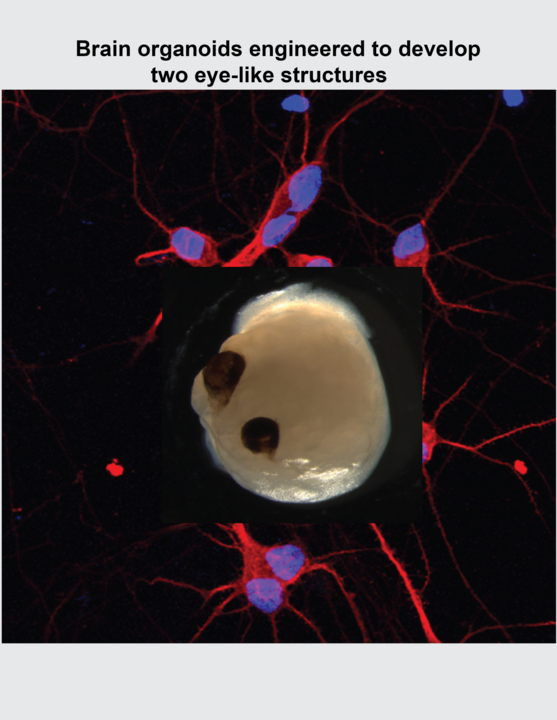"Our work highlights the remarkable ability of brain organoids to generate primitive sensory structures that are sensitive to light and harbour cell types similar to those found in the body," says the study's lead author, Prof. Jay Gopalakrishnan, Faculty of Medicine, Heinrich Heine University Düsseldorf.
Many aspects of human brain development and diseases can be studied with 3D brain organoids. They are derived from pluripotent stem cells from which all cell types of the body can develop. Researchers have previously used human embryonic stem cells to create the optic nerve cap that gives rise to the retina - the light-sensitive layer of tissue at the back of the eye. In another study, it was shown that optic cup-like structures can be generated from iPSCs derived from adult cells that have been genetically reprogrammed into an embryonic-like pluripotent state. In the past, the production of optic nerve heads from pluripotent stem cells has focused on the generation of the pure retina. So far, optic nerve heads and other 3D retinal structures have not been functionally integrated into brain organoids.
To accomplish this feat, Gopalakrishnan and his team modified a protocol they had previously developed for converting iPSCs into neural tissue. The human brain organoids formed optical cups that appeared after only 30 days and matured into visible structures within 50 days. This time frame corresponds to retinal development in the human embryo and could make certain types of developmental neurobiology experiments more efficient.
In 16 independent batches from four iPSC donors, the researchers generated 314 brain organoids, 72 per cent of which formed optic nerve heads, showing that the method is reproducible. These structures contained different retinal cell types that formed electrically active neuronal networks that responded to light. The optic cup brain organoids also contained lens and corneal tissue and showed a connection between the retina and brain regions. "In the mammalian brain, retinal ganglion cell nerve fibres extend to connect to their targets in the brain, an aspect that has never been shown before in an in vitro system," says Gopalakrishnan.
In future studies, they hope to develop strategies to keep the optic nerve heads viable over long periods of time and use them to study the mechanisms that cause retinal diseases.
This work was supported by the German Research Foundation (DFG) and the Fritz Thyssen Foundation.
Original publication:
Cell Stem Cell, Gabriel et al: "Human brain organoids assemble functionally integrated bilateral optic vesicles" www.cell.com/cell-stem-cell/fulltext/S1934-5909(21)00295-2 DOI: 10.1016/j.stem.2021.07.010
Contact:
Susanne Dopheide
Press and Communication Office /
Faculty of Medicine, HHU Düsseldorf
Susanne.Dopheide@med.uni-duesseldorf.de
+49 (0)211 81-04173


